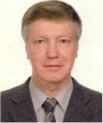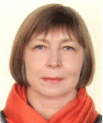Deep bed filtration and formation damage by particles with distributed properties
Nastaran Khazali A * , Gabriel Malgaresi B , Yuri Osipov C , Ludmila Kuzmina D and Pavel Bedrikovetsky AA
B
C
D

Nastaran Khazali is currently a PhD student at the University of Adelaide. She holds a Master’s degree in reservoir engineering and two Bachelor’s degrees in petroleum and industrial engineering, all from Amirkabir University of Technology (Tehran Polytechnic). She was awarded the privilege of a dual degree, studying as an exceptional talent student when she was an undergraduate student at Amirkabir University. A coupled background in petroleum and industrial engineering was the main motivation for the pursuit of her Bachelors’ and Master’s theses in the field of datamining/machine-learning and artificial intelligence and their applications in reservoir engineering. For her PhD thesis, she is working on size-distributed suspension/colloidal flow in porous media. Contact email: nastaran.khazali@adelaide.edu.au. |

Dr Gabriel Malgaresi is a Chemical Engineer with a Master’s degree in Reservoir Engineering from the State University of Northern Rio de Janeiro and a PhD in the same field from the University of Adelaide. Throughout his career, Gabriel has conducted research on diverse topics, such as formation damage, multi-component suspension particles, multi-phase flow in porous media, wettability alteration, and carbon dioxide (CO2) storage. Presently, he is employed at Predico Software, where he is engaged in the development of analyses and models for CO2 storage. Additionally, he is actively involved in expanding pressure, volume and temperature; tank; and wellbore models. Contact email: gabriel.malgaresi@predico.com.au. |

Professor Yuri Osipov teaches pure and applied mathematics at the Department of Informatics and Applied Mathematics, Moscow State University of Civil Engineering. His research interests include exact, asymptotic, and numerical solutions of non-linear filtration problems in porous media. He has published several papers on analytical modelling in deep bed filtration and formation damage in leading academic journals. Contact email: yuri-osipov@mail.ru. |

Professor Ludmila Kuzmina teaches differential and integral calculus and differential equations in the Department of Applied Mathematics of the Higher School of Economics (Moscow). Her research interests include mathematical models of deep bed filtration in porous media and non-linear problems of underground fluid mechanics. She has published several papers on exact and asymptotic solutions for non-linear transport of colloidal and nano-fluids. Contact email: l.kuzmina@mail.ru. |

Professor Pavel Bedrikovetsky is a Professor of Petroleum Engineering at the University of Adelaide. He authored a seminal book on reservoir engineering and 290 papers in international journals and SPE. His research covers CO2 and hydrogen storage, well injectivity and productivity, formation damage and enhanced oil recovery. He holds an MSc in Applied Mathematics, a PhD in Fluid Mechanics, and DSc in Reservoir Engineering, all from Moscow Gubkin Oil-Gas University. Pavel boasts 40 years of industrial experience in Europe, USA, Brazil, Ukraine, Russia, and Australia. Pavel was a 2008–2009 and 2016–2017 Society of Petroleum Engineers (SPE) Distinguished Lecturer. He is an SPE Distinguished Member. Pavel was ranked among the world’s top 2% of scientists by Stanford University (2020). Contact email: pavel.bedrikovetski@adelaide.edu.au. |
Abstract
Current models for deep bed filtration describe particles with uniform properties. Yet, the sizes, densities, and mineral composition of particles vary significantly in the same injection well. The aim of this work is to provide an effective mathematical model for water injection of particles with distributed properties and formation damage prediction. We average the set of traditional population balance equations for single-property particles and obtain one upscaled equation. The upscaled equation for particle retention rate contains a non-linear function of suspended concentration, which we call the 'suspension function'. We derive analytical solutions for the upscaled equation for linear (coreflood) and radial (well injectivity) flows. Then we treat lab coreflood data to determine the model suspension function and provide a model for well injectivity prediction. The retention profile for the flow of uniform particles has an exponential form. Frequently reported in the literature, hyper-exponential forms have been hypothetically explained by multiple particle properties. The inverse solution allows revealing the individual filtration coefficients for binary mixtures from total breakthrough concentrations during coreflood. Treatment of the data from lab experiments reveals individual filtration coefficients that belong to common intervals. For the first time, deep bed filtration of particles with distributed properties is upscaled and presented using a single equation that reflects the particle property distribution. This equation provides an effective mathematical model for tuning lab coreflood data, determines the model function, and uses it for injectivity decline prediction.
Keywords: deep bed filtration, filtration function, hyper-exponential retention, particle property distribution, size-distributed colloids, suspension function, suspension/colloidal flow, upscaling.
 Nastaran Khazali is currently a PhD student at the University of Adelaide. She holds a Master’s degree in reservoir engineering and two Bachelor’s degrees in petroleum and industrial engineering, all from Amirkabir University of Technology (Tehran Polytechnic). She was awarded the privilege of a dual degree, studying as an exceptional talent student when she was an undergraduate student at Amirkabir University. A coupled background in petroleum and industrial engineering was the main motivation for the pursuit of her Bachelors’ and Master’s theses in the field of datamining/machine-learning and artificial intelligence and their applications in reservoir engineering. For her PhD thesis, she is working on size-distributed suspension/colloidal flow in porous media. Contact email: nastaran.khazali@adelaide.edu.au. |
 Dr Gabriel Malgaresi is a Chemical Engineer with a Master’s degree in Reservoir Engineering from the State University of Northern Rio de Janeiro and a PhD in the same field from the University of Adelaide. Throughout his career, Gabriel has conducted research on diverse topics, such as formation damage, multi-component suspension particles, multi-phase flow in porous media, wettability alteration, and carbon dioxide (CO2) storage. Presently, he is employed at Predico Software, where he is engaged in the development of analyses and models for CO2 storage. Additionally, he is actively involved in expanding pressure, volume and temperature; tank; and wellbore models. Contact email: gabriel.malgaresi@predico.com.au. |
 Professor Yuri Osipov teaches pure and applied mathematics at the Department of Informatics and Applied Mathematics, Moscow State University of Civil Engineering. His research interests include exact, asymptotic, and numerical solutions of non-linear filtration problems in porous media. He has published several papers on analytical modelling in deep bed filtration and formation damage in leading academic journals. Contact email: yuri-osipov@mail.ru. |
 Professor Ludmila Kuzmina teaches differential and integral calculus and differential equations in the Department of Applied Mathematics of the Higher School of Economics (Moscow). Her research interests include mathematical models of deep bed filtration in porous media and non-linear problems of underground fluid mechanics. She has published several papers on exact and asymptotic solutions for non-linear transport of colloidal and nano-fluids. Contact email: l.kuzmina@mail.ru. |
 Professor Pavel Bedrikovetsky is a Professor of Petroleum Engineering at the University of Adelaide. He authored a seminal book on reservoir engineering and 290 papers in international journals and SPE. His research covers CO2 and hydrogen storage, well injectivity and productivity, formation damage and enhanced oil recovery. He holds an MSc in Applied Mathematics, a PhD in Fluid Mechanics, and DSc in Reservoir Engineering, all from Moscow Gubkin Oil-Gas University. Pavel boasts 40 years of industrial experience in Europe, USA, Brazil, Ukraine, Russia, and Australia. Pavel was a 2008–2009 and 2016–2017 Society of Petroleum Engineers (SPE) Distinguished Lecturer. He is an SPE Distinguished Member. Pavel was ranked among the world’s top 2% of scientists by Stanford University (2020). Contact email: pavel.bedrikovetski@adelaide.edu.au. |
References
Albinger O, Biesemeyer BK, Arnold RG, Logan BE (1994) Effect of bacterial heterogeneity on adhesion to uniform collectors by monoclonal populations. FEMS Microbiology Letters 124(3), 321-326.
| Crossref | Google Scholar |
Bedrikovetsky P, Siqueira FD, Furtado CA, et al. (2011) Modified Particle Detachment Model for Colloidal Transport in Porous Media. Transport in Porous Media 86(2), 353-383.
| Crossref | Google Scholar |
Bedrikovetsky P, Osipov Y, Kuzmina L, Malgaresi G (2019) Exact Upscaling for Transport of Size-Distributed Colloids. Water Resources Research 55(2), 1011-1039.
| Crossref | Google Scholar |
Bradford SA, Leij FJ (2018) Modeling the transport and retention of polydispersed colloidal suspensions in porous media. Chemical Engineering Science 192, 972-980.
| Crossref | Google Scholar |
Bradford SA, Torkzaban S, Simunek J (2011) Modeling colloid transport and retention in saturated porous media under unfavorable attachment conditions. Water Resources Research 47(10), 10503.
| Crossref | Google Scholar |
Elimelech M (Menachem) (1995) ‘Particle deposition and aggregation: measurement, modelling, and simulation.’ (Butterworth-Heinemann) Available at http://www.sciencedirect.com:5070/book/9780750607438/particle-deposition-and-aggregation [accessed 4 December 2023]
Goldberg E, Scheringer M, Bucheli TD, et al. (2014) Critical assessment of models for transport of engineered nanoparticles in saturated porous media. Environmental science & technology 48(21), 12732-12741.
| Crossref | Google Scholar | PubMed |
Herzig JP, Leclerc DM, Goff PL (1970) Flow of Suspensions through Porous Media—Application to Deep Filtratio. Industrial & Engineering Chemistry 62(5), 8-35.
| Crossref | Google Scholar |
Ilzig T, Ricke A, Siebert JMU, et al. (2024) Quantitative analysis of colloid retention and pore fluid flow in monolithic, open-porous media by X-ray computed microtomography and magnetic resonance velocimetry. Chemical Engineering Science 283, 119299.
| Crossref | Google Scholar |
Jiang X, Tong M, Lu R, Kim H (2012) Transport and deposition of ZnO nanoparticles in saturated porous media. Colloids and Surfaces A: Physicochemical and Engineering Aspects 401, 29-37.
| Crossref | Google Scholar |
Johnson WP (2020) Quantitative Linking of Nanoscale Interactions to Continuum-Scale Nanoparticle and Microplastic Transport in Environmental Granular Media. Environmental science & technology 54(13), 8032-8042.
| Crossref | Google Scholar | PubMed |
Johnson WP, Rasmuson A, Ron C, et al. (2020) Anionic nanoparticle and microplastic non-exponential distributions from source scale with grain size in environmental granular media. Water Research 182, 116012.
| Crossref | Google Scholar | PubMed |
Kasel D, Bradford SA, Šimůnek J, et al. (2013) Transport and retention of multi-walled carbon nanotubes in saturated porous media: effects of input concentration and grain size. Water Research 47(2), 933-944.
| Crossref | Google Scholar | PubMed |
Li X, Johnson WP (2005) Nonmonotonic variations in deposition rate coefficients of microspheres in porous media under unfavorable deposition conditions. Environmental Science & Technology 39(6), 1658-1665.
| Crossref | Google Scholar | PubMed |
Li X, Scheibe TD, Johnson WP (2004) Apparent decreases in colloid deposition rate coefficients with distance of transport under unfavorable deposition conditions: a general phenomenon. Environmental Science & Technology 38(21), 5616-5625.
| Crossref | Google Scholar | PubMed |
Liang Y, Bradford SA, Šimůnek J, Klumpp E (2019) Mechanisms of graphene oxide aggregation, retention, and release in quartz sand. Science of the Total Environment 656, 70-79.
| Crossref | Google Scholar | PubMed |
Lin D, Hu L, Bradford SA, et al. (2021) Pore-network modeling of colloid transport and retention considering surface deposition, hydrodynamic bridging, and straining. Journal of Hydrology 603, 127020.
| Crossref | Google Scholar |
Malgaresi GVC, Zhang H, Chrysikopoulos CV, et al. (2019a) Cotransport of Suspended Colloids and Nanoparticles in Porous Media. Transport in Porous Media 128(1), 153-177.
| Crossref | Google Scholar |
Malgaresi G, Collins B, Alvaro P, et al. (2019b) Explaining non-monotonic retention profiles during flow of size-distributed colloids. Chemical Engineering Journal 375, 121984.
| Crossref | Google Scholar |
Malgaresi G, Khazali N, Bedrikovetsky P (2020) Non-monotonic retention profiles during axi-symmetric colloidal flows. Journal of Hydrology 580, 124235.
| Crossref | Google Scholar |
Ramachandran V, Fogler HS (1999) Plugging by hydrodynamic bridging during flow of stable colloidal particles within cylindrical pores. Journal of Fluid Mechanics 385, 129-156.
| Crossref | Google Scholar |
Schijven JF, Hassanizadeh SM, De Bruin RH (2002) Two-site kinetic modeling of bacteriophages transport through columns of saturated dune sand. Journal of Contaminant Hydrology 57(3–4), 259-279.
| Crossref | Google Scholar | PubMed |
Taghavy A, Abriola LM (2018) Modeling reactive transport of polydisperse nanoparticles: assessment of the representative particle approach. Environmental Science: Nano 5(10), 2293-2303.
| Crossref | Google Scholar |
Tong M, Johnson WP (2007) Colloid population heterogeneity drives hyperexponential deviation from classic filtration theory. Environmental Science & Technology 41(2), 493-499.
| Crossref | Google Scholar | PubMed |
Torkzaban S, Bradford SA, van Genuchten MT, Walker SL (2008) Colloid transport in unsaturated porous media: The role of water content and ionic strength on particle straining. Journal of Contaminant Hydrology 96(1–4), 113-127.
| Crossref | Google Scholar | PubMed |
Tufenkji N, Elimelech M (2004) Deviation from the classical colloid filtration theory in the presence of repulsive DLVO interactions. Langmuir 20(25), 10818-10828.
| Crossref | Google Scholar | PubMed |
Tufenkji N, Elimelech M (2005a) Spatial distributions of Cryptosporidium oocysts in porous media: Evidence for dual mode deposition. Environmental Science and Technology 39(10), 3620-3629.
| Crossref | Google Scholar |
Tufenkji N, Elimelech M (2005b) Breakdown of colloid filtration theory: role of the secondary energy minimum and surface charge heterogeneities. Langmuir 21(23), 10896-10897.
| Crossref | Google Scholar |
Wang D, Paradelo M, Bradford SA, et al. (2011) Facilitated transport of Cu with hydroxyapatite nanoparticles in saturated sand: Effects of solution ionic strength and composition. Water Research 45(18), 5905-5915.
| Crossref | Google Scholar | PubMed |
Wang D, Zhang W, Hao X, et al. (2013) Transport of biochar particles in saturated granular media: Effects of pyrolysis temperature and particle size. Environmental Science & Technology 47(2), 821-828.
| Crossref | Google Scholar | PubMed |
Yang W, Bradford SA, Wang Y, et al. (2019) Transport of biochar colloids in saturated porous media in the presence of humic substances or proteins. Environmental Pollution (Barking, Essex: 1987) 246, 855-863.
| Crossref | Google Scholar | PubMed |
You Z, Badalyan A, Bedrikovetsky P, et al. (2014) Productivity decline in a Salamander geothermal well: experiment, modelling and case study. The APPEA Journal 54(1), 345-356.
| Crossref | Google Scholar |
Yuan H, Sin G (2011) Uncertainty and sensitivity analysis of filtration models for non-Fickian transport and hyperexponential deposition. Chemical Engineering Journal 168(2), 635-648.
| Crossref | Google Scholar |
Yuan H, Shapiro AA (2010) Modeling non-Fickian transport and hyperexponential deposition for deep bed filtration. Chemical Engineering Journal 162(3), 974-988.
| Crossref | Google Scholar |
Zeinijahromi A, Bedrikovetski P (2015) New method of controlling excessive water production in wells using induced formation damage. The APPEA Journal 55(2), 485 485.
| Crossref | Google Scholar |
Zhang H, Malgaresi GVC, Bedrikovetsky P (2018) Exact solutions for suspension-colloidal transport with multiple capture mechanisms. International Journal of Non-Linear Mechanics 105, 27-42.
| Crossref | Google Scholar |


